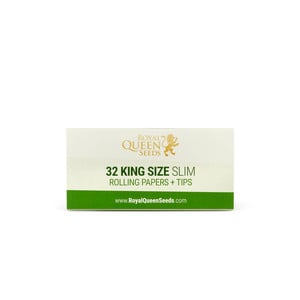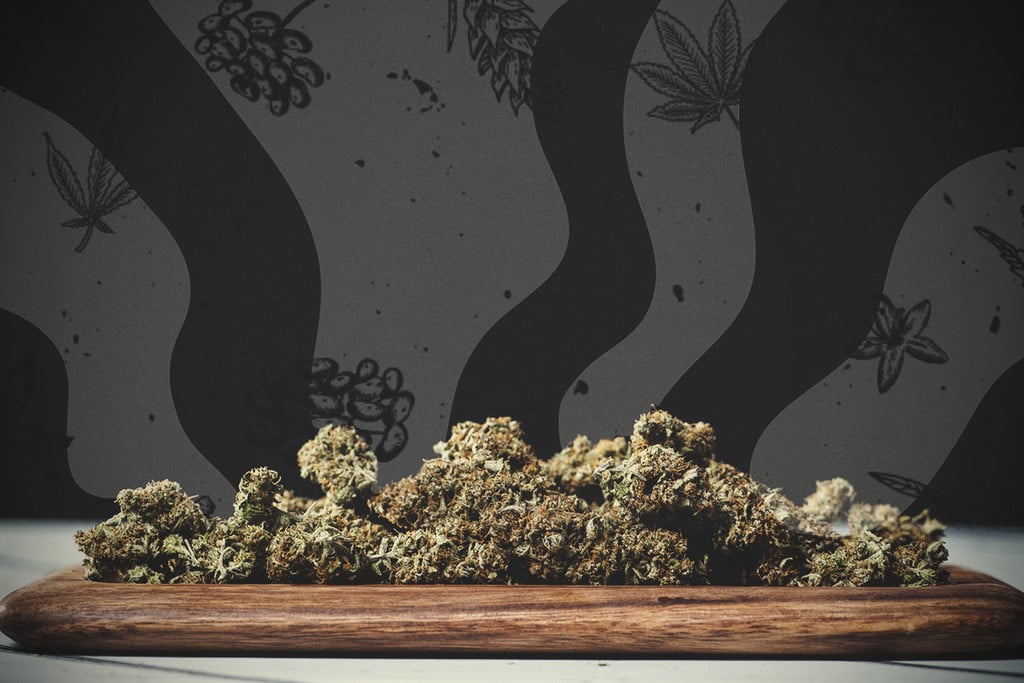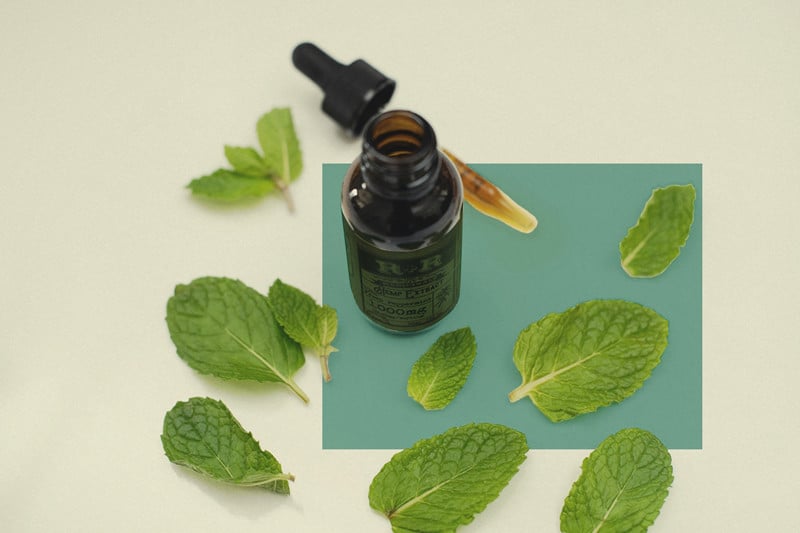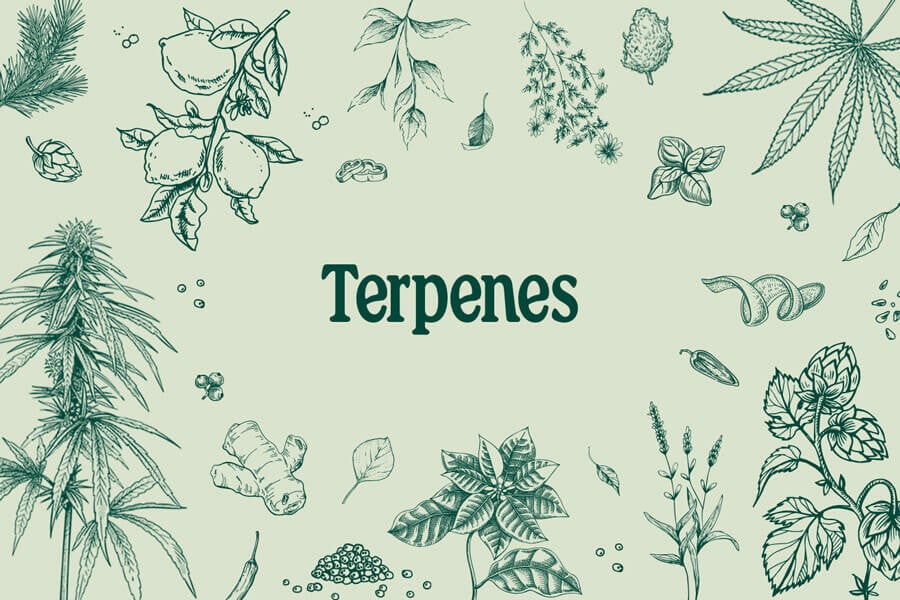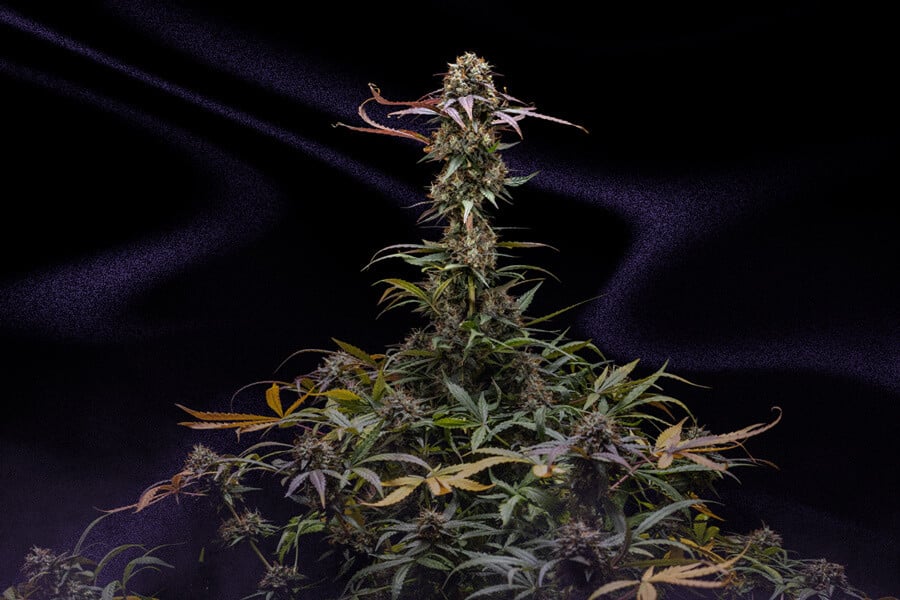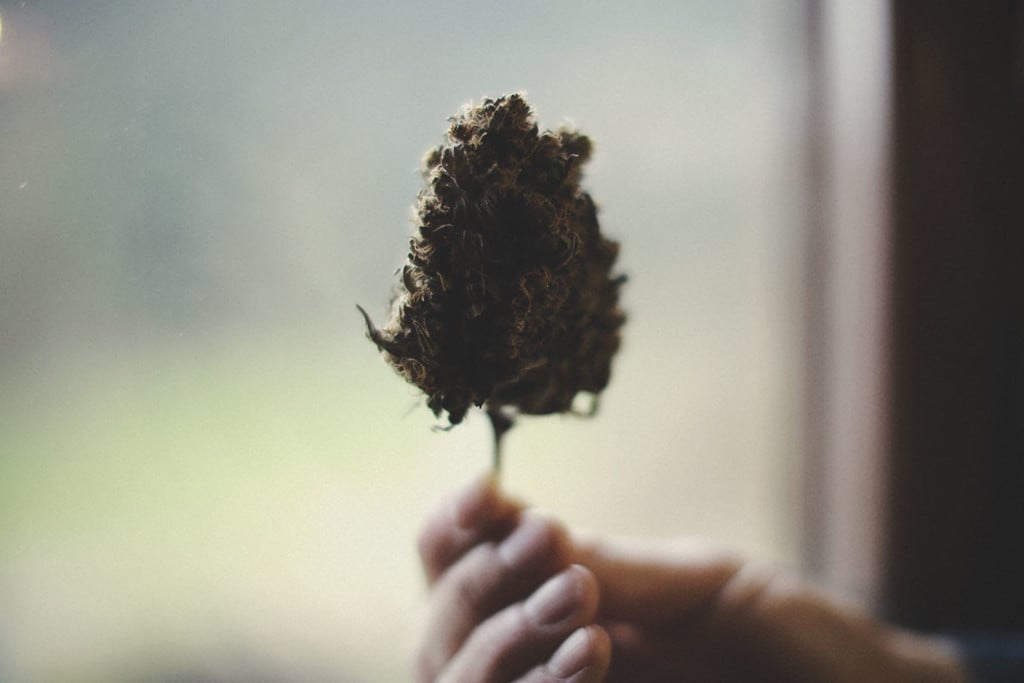.

What Does Weed Taste Like? A Guide
Every time you take a hit from a bong, blunt, or vape, you experience the aromatic terpenes that each strain has to offer. But to truly taste the unique profile of each cultivar, you need to set up a weed tasting session. These events allow users to smoke buds (without knowing what they are), compare notes, and vote on their favourite.
Contents:
- Weed flavour profiles: assess with smell first
- The anatomy of smell
- Volatile compounds underpin weed flavour profiles
- Top notes
- Middle notes
- Bottom notes
- Detecting weed notes with your nose
- How to taste weed—things to consider
- How to actually taste weed—step by step
- Smoking weed just became a whole lot more fun
Our guide on the finer points of cannabis aroma, the components to assess, and how it all leads into wider bud appreciation should have you tasting your stash like a connoisseur in no time.
Weed Flavour Profiles: Assess With Smell First
Smell, aroma, bouquet, and fragrance are words often invoked when discussing cannabis. Truly, apart from visual appreciation, smell is the primary component used to ascertain cannabis quality.
Smell is an ephemeral sense, so discussing it is difficult. Like music, it has many distinct classes and groups, and appeals to many people in different ways. Also like music, smell is layered and nuanced, so it isn’t surprising that the language for talking about smell is similar to that of music. Smell has notes and can be grouped similarly into chords and progressions.
Sense of smell and sense of taste are intimately entwined, so much so that losing the sense of smell also has the side effect of losing much of the sense of taste. This is actually a chronic condition that can cause depression and affect quality of life significantly.
The Anatomy Of Smell
Smell, like hearing and sight, is directly connected to the brain by a major nerve. A small patch of tissue with olfactory sensory neurons resides high in the nose. Smell is part of the chemosensory system or the chemical senses.
To give an example, as volatile molecules evaporate from a flower and are inhaled through the nose, they are detected by the olfactory neurons. The message transmitted to the brain is interpreted as smell. In the case of cannabis, these molecules are mostly terpenes and phenols.
Volatile Compounds Underpin Weed Flavour Profiles
Have you ever noticed that lifting a freshly squeezed bud, dry or wet, to your nose has an immediate and strong smell? Then, a bit later, the smell takes on a slightly different variation, and changes yet again when you detect the smell on your top lip fifteen minutes later?
These are called top, middle, and base aromas.
Terpenes and phenols are volatile aromatic compounds. When exposed to the air, they evaporate, a process which is perceived by us as smell. But the layers and nuances of smell precludes us from saying that a bud smells like one particular thing.
A strain will certainly have an overall characteristic and identifying aroma; Skunks and Cheeses, for example, have a particularly idiosyncratic smell. But the components of those bouquets are always a trace of this, a hint of that, and a smattering of something else—a particular progression of singularly identifiable notes that combine to make up the complex bouquets of the cannabis plant.
Top notes
The first impression of a smell is known as the top notes. The molecules that form the terpenes of these combined top notes are the most volatile in the entire bouquet. They evaporate and disperse quickly, and the trained nose can identify the individual notes that make up the initial impression.

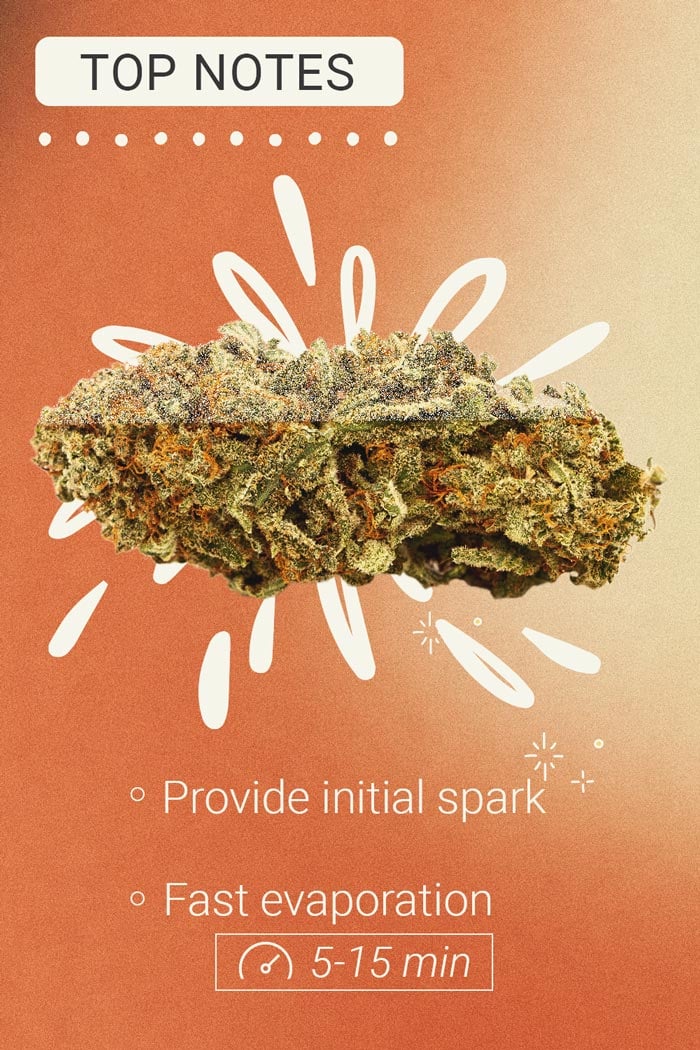
Some Common Top Notes To Cannabis
- Limonene: The primary terpene responsible for the smell of citrus, limonene is extremely volatile and appears in many strains as hints of lemon or orange, lime or grapefruit—even to the point of being positively astringent and nose-tingling. Think lemon impressions of Hazes and orange suggestions in Lemon Haze. Limonene is used in many cleaning products, and is so volatile that in bulk it is a dangerous fire hazard.
- Geraniol: This terpene that gives geraniums their smell, and is a component of rose fragrance, is also a top note. It is one to evaporate quickly and mingle to form the first impression. The sweet floral tones in many strains are composed of geraniol. Unsurprisingly, this terpene is used substantially in perfumery.
- Linalool: The terpene that gives lavender its distinctive smell and sedative properties, linalool also contributes to the floral first impressions of cannabis flowers. Linalool has a long history as a respected natural relaxant.
Middle Notes
The terpenes that form middle notes evaporate more slowly and do not boil off as quickly as top notes; they also have a longer life once airborne, and are perceived for longer. Middle notes combine to form the predominant scent chord that lingers on the olfactory nerves after the top notes have left their first impression.

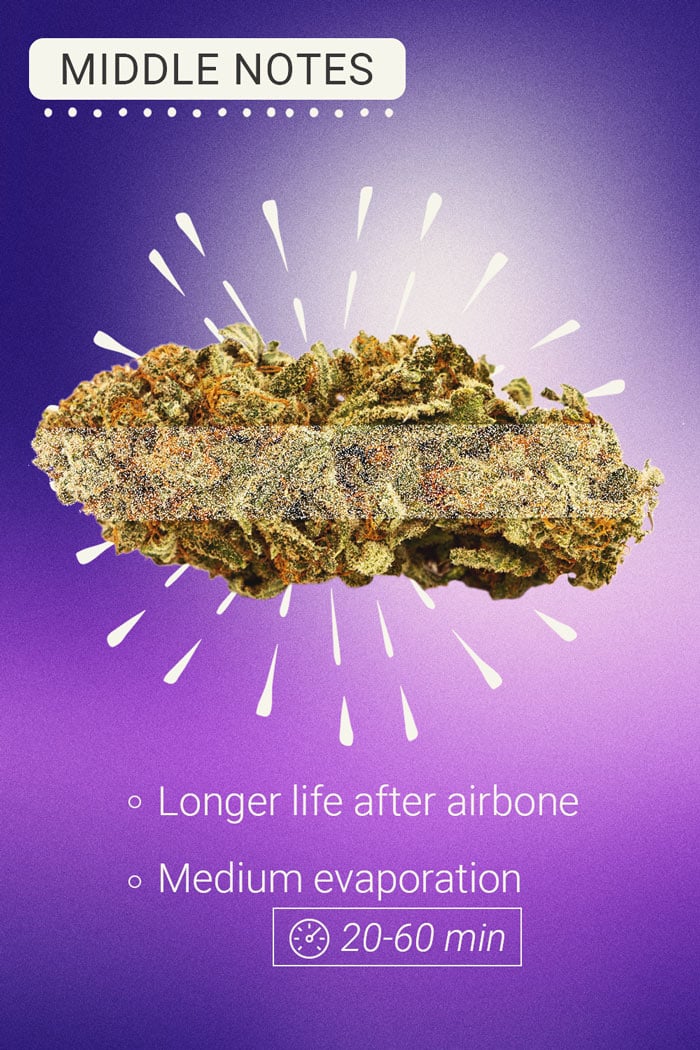
Some Common Middle Notes To Cannabis
- α-Terpineol: This terpene is what gives pine oil its distinctive smell. As a middle note, it will remain longer and go on to form the main body of the scent. α-Terpineol has countless uses outside of making cannabis smell fantastic.
- β-Caryophyllene: The terpene that gives pepper its spicy and distinctive smell, it also provides a large part of the scents of oregano, basil, and rosemary. Many strains carry this sinus-tingling terpene, and it is partly responsible for actual physical sensations in the nose when sampling some strains.
- α-Terpinene: The fragrance of marjoram is due to the predominance of this terpene. It is also a component of the pleasantly earthy and herbaceous notes that cannabis can display. It lingers longer than most, and can combine with other terpenes to provide the longer-lasting body of a scent.
Bottom Notes
Bottom notes are arranged from notes that evaporate the slowest and linger the longest. They are the fragrances on your top lip, and the aroma you keep going back to your fingers to sniff even hours after coming into contact with any weed. Over a long curing period, they will be the predominant smells coming from the storage jar until a nugget is broken up and the whole bouquet is fresh once more.

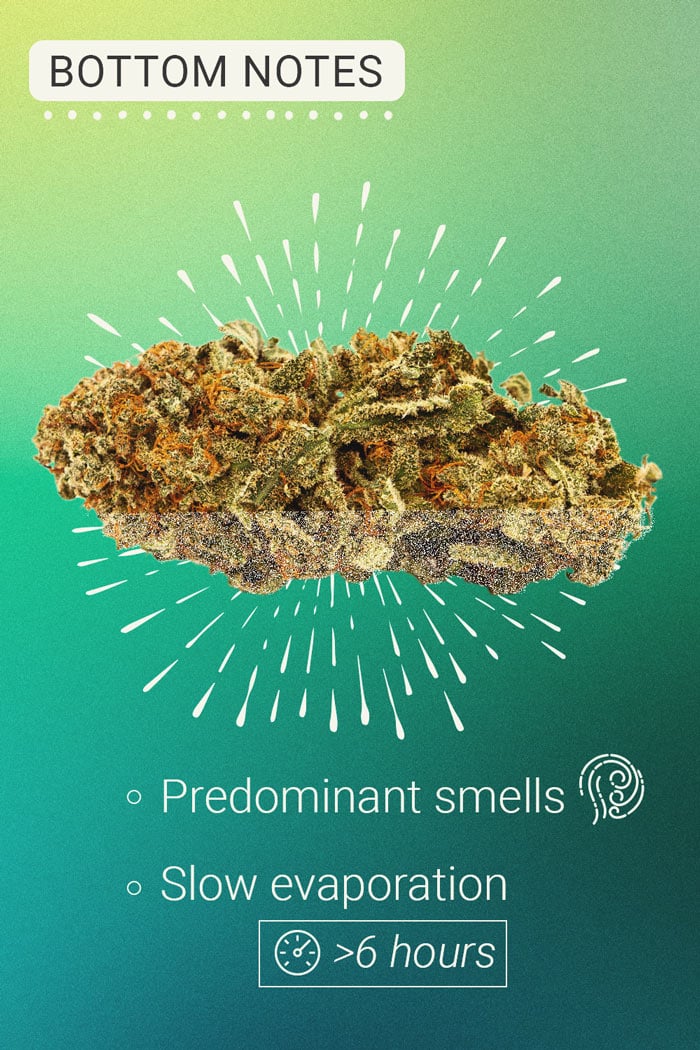
Some Common Bottom Notes To Cannabis
- Eugenol: A long-lasting terpene responsible for the aroma of cloves. Once the astringency of eugenol disperses, the scent can last for many days before it is an echo.
- Gingerol: One of the phenols that gives ginger its sweet and spicy aroma. Slow to evaporate and long-lasting, gingerol, like eugenol, can last for days before truly fading.
- Trans-nerolidol: This is the terpene that gives jasmine its nuanced floral aroma with hints of rose, apple, and fruity citrus. The aroma from jasmine can last so long it is put in satchels in clothes drawers to subtly fragrance clothes for months.
Detecting Weed Notes With Your Nose
It is quite right to describe a cannabis flower like this:
Agitating a ripe and sticky flower produces a pungently layered top chord. The top notes of sour citrus and sweet florals tingle the nose and assault the senses. As the top chord fades, the middle chord is sensed more; memories of warm afternoons in pine forests linger and can even be smelled in the air. Later on, there are distinct whiffs of gentle flowers and dried ginger on your fingers and clothes as the bottom notes make themselves more dominant.
Like music, learning the language of smell takes time and experience. Smells are remembered just as much as any other mental input, and over time, a reference library of aromas ideal for identification in cannabis can be accumulated. So over time, it is possible to identify the separate fragrances in each chord as they progress through their stages of volatility.
How To Taste Weed—Things To Consider
There’s no better way to experience the wealth of weed flavour profiles than in a group. Invite your cannabis-loving friends over, amass a diverse array of flowers, and let the weed tasting commence. Not only are these events much more fun with friends, but everyone there will have their own subjective experience. By comparing and contrasting the notes that you each detect, you can start to build an objective picture of what each strain truly provides.
Everyone in the group will also have something to contribute. Assign one friend the job of bringing along a vape (preferably built for gatherings like the Volcano Hybrid). Ask another buddy to bring different types of papers along and a couple of blunt wraps. Inhaling the same strain in different ways will help you understand the taste of cannabis from different angles. Finally, you’ll need to have plenty of snacks at hand for when the session ends to satisfy the munchies and light up your taste buds in a different way.
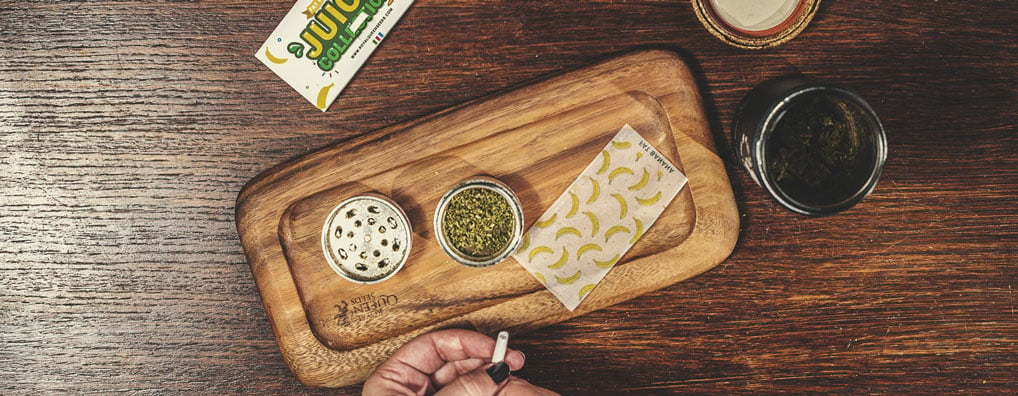
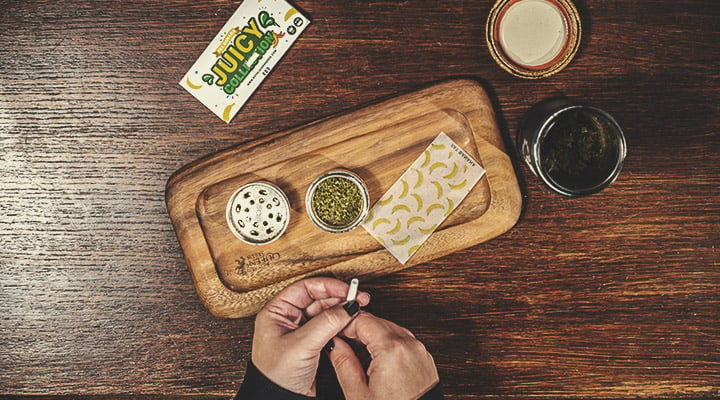
-
Selection methods
There are thousands of cannabis strains available. It goes without saying that you’re not going to get through all of them in a single session. Besides, indulging in too many strains at once will confuse your taste buds and make it hard to identify any solid weed notes. We recommend setting for around six strains per session so you can really appreciate what’s in front of you.
Next, it helps to add some structure to the weed tasting session. If you have six separate varieties, divide them up into their broader flavour category, such as fruity, floral, earthy, woody, gassy, and peppery. Tackle each one at a time to experience their flavours in isolation. But you aren’t limited to dividing strains into taste. Splitting them up into growing methods can help you get an idea of how each technique affects the weed flavour profiles. Categories can include indoor-grown, outdoor-grown, organic, non-organic, hydroponic, and aeroponic. You can even delve into the subtlety of till vs no-till to see if these practices have an impact on the taste of cannabis.
Want to make things really fun? Try comparing six radically different strains in the same session. Not only will you experience a diversity of flavours, but the different effects will keep you all on your toes. An example of such a line up would include a high-THC strain such as Royal Gorilla, a low-THC strain like Quick One, a strain with equal parts THC and CBD such as Euphoria, a citrus and energising variety like Lemon Shining Silver Haze, a stoning strain like Skunk XL, and a variety with a unique terpene profile such as Royal Cheese.
Finally, why not try the same strain in totally different ways. Try raw flowers, hash, rosin, and shatter from the same variety to see how they compare. Oh, and don’t forget plenty of water and a notebook for all of your guests.
-
What To Look For When Tasting Weed: Physical Appearance
The physical appearance of a bud can reveal several characteristics before it is consumed. Smelling weed and noting initial observations are intimately connected as it is quite impossible to NOT smell weed. Cannabis is notoriously stinky—and who can resist that intoxicating perfume anyway!?
Visual inspection can give insight into species, whether it be sativa, indica, or dominance in either direction, maturity, and whether the bud is indoor or outdoor-grown. Things to take into account when examining a nice bud will include:
⇢ The look:
- Colours of hairs, calyxes, and resin
- Glossy or matte, compact or loose, old or fresh
⇢ The feel:
- Hard or forgiving, sticky or dry, dense or airy, heavy or light
⇢ The smell:
As discussed above, there will be the overall first impression that forms the characteristic smell of the strain. Then, there are the three stages of aromas that will vary from strain to strain. Although difficult to describe, they will stay with you forever and be recalled when assessing weed in the future.
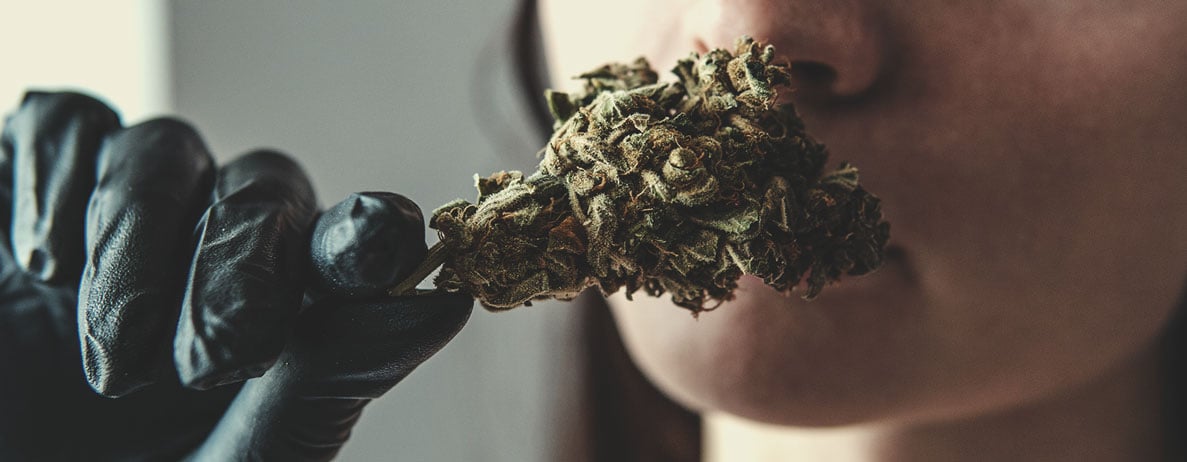
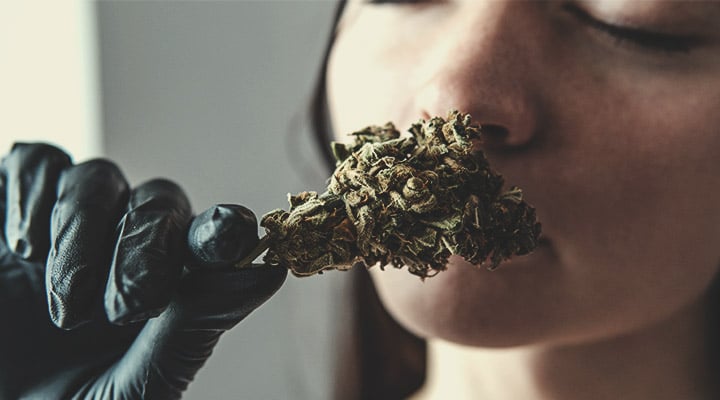
-
What To Sense When Tasting Weed: Potency and Effects
The potency and effects of weed are in no way universal, and are entirely down to personal preference and individual biology. What gets one person soaring might couchlock someone else. It is simply the nature of the beast.
Things to consider when evaluating a yummy bud include psychotropic and physical effects, flavours, and mouth/throat feel. Aspects of the evaluation process should include:
⇢ The type of high:
- Cerebral, physical, near-psychedelic, nootropic, relaxing, narcotic, motivating, creative, contemplative, languorous, etc.
⇢ Duration and effects in stages:
- How long the initial effect lasts and how long it takes to reach a peak—is there a head rush or a smooth onset?
- The quantity it takes to get the full effect
- What secondary effects occur over time—does it wear off cleanly or leave you sleepy?
⇢ Tolerance range:
With some strains, there is a limit to how much can be used before effects stop being pronounced. Similarly, some strains will decline in effectiveness over time when used daily, while others have the same effects no matter how many times they are used.
⇢ Medicinal effects:
When using cannabis for therapeutic benefit, the patient needs to be honest with themselves and pay attention to their body. Is the selected strain having the desired outcome for the condition being treated? If not, other strains will need to be trialled until the ideal characteristics are found.
⇢ Mouth and throat-feel:
- Is it smooth on the palate and throat upon inhale and exhale? Is it harsh or does it burn?
- Can big lungfuls be taken without coughing, or is it lots of little tokes?
-
Setting the Scene
Once you’ve decided what weed you want to taste, you need to set things up in a way to make the experience as enjoyable as possible. Consider all of the variables that will help to centre the event around perceiving taste. This isn’t just a casual smoking session with a goal to get baked, you want to savour those terpenes.
⇢ Blind tasting
Tasting your weed blind will add an element of challenge and fun to the session. Assign one of your friends the job of labelling each strain in a way that nobody else can see. That way, all the other guests will have to try and guess which strain they’re smoking. Pass the joint around and take a vote. Tasting weed blind will also remove any bias from the situation and enable you to savour the flavours from a neutral position.
⇢ The table
Gather around a table to store all of your gear on. A white table works best, as this background allows all of the unique colours of each strain to pop. If you don’t have a white table, just place a white sheet or tablecloth on your surface.
⇢ Papers and rigs
If you chose to smoke joints during the cannabis tasting session, opt for the best you can find. Organic flavourless papers will help the terpene profile shine through. If you’re going with bongs, pipes, or vapes, make sure they’re entirely clean and free of nasty-tasting grime.
⇢ Environment
Yes, even the time of day can affect your tasting event—ask any cannabis connoisseur. You’re free to start any time of day, but nothing tops a sunny summer afternoon with a light breeze in the air. If you’re fortunate to live in a warm region, wait until temperatures reach 22–24°. If you’re lucky, you’ll also get a relative humidity somewhere around 50%. Why does this matter? Because readings too far outside these ranges cause the nasal mucosa to become dehydrated, reducing olfactory capacity.
⇢ Palate cleansers
It’s important to cleanse your palate before your session, and in between different strains, so you don’t experience distorted tastes. Avoid consuming any particularly flavourful foods and drinks before starting. Also, experienced wine and cigar tasters suggest taking a bite of a dry cracker between different products (with a sip of water to avoid a dry mouth).


How To Actually Taste Weed—Step By Step
Now you know exactly how to set up a weed tasting session. Below, you’ll learn how to carry out each step:
- After your assigned budtender hands out the first strain, pass around the flowers and take a whiff to get an initial grip of the terpene profile.
- After rolling or packing a bowl, hold in the first hit for 3–4 seconds before exhaling. Then, take a deeper hit, hold for the same amount of time, and rapidly exhale through the mouth and nose. Finally, take a third hit of medium intensity and slowly exhale through the mouth, letting the smoke roll across your tongue.
- Pass the joint, vape, or bong, and take your notes while the flavours are still fresh on your tongue. Write down any top, middle, and bottom notes you experienced, as well as any noticeable effects within the following minutes.
- Once everyone has had a taste, compare notes and share your opinions among the group. Take notes on how your experiences agreed and clashed.
- After hearing what everyone had to say, the group should taste the same strain again, compare their experience for a second time, and see if they come to any further agreements or disagreements.
- After tasting all of the samples, each person in the group should cast a vote on their favourite strain.
- After voting, the budtender should reveal the labels on each strain.
Smoking Weed Just Became a Whole Lot More Fun
Did you just find a new hobby? Above all else, weed tasting sessions are simply fun. They’re not about flexing your cannabis knowledge on others or guessing every strain like a pro. It all boils down to the subjective experience of the individuals involved. Take things one puff at a time, savour every terpene and get ready to enjoy cannabis in a new way. You’ll refine your taste over time, and find an enhanced appreciation for the taste of cannabis trickle into your casual smoking sessions, too.


























